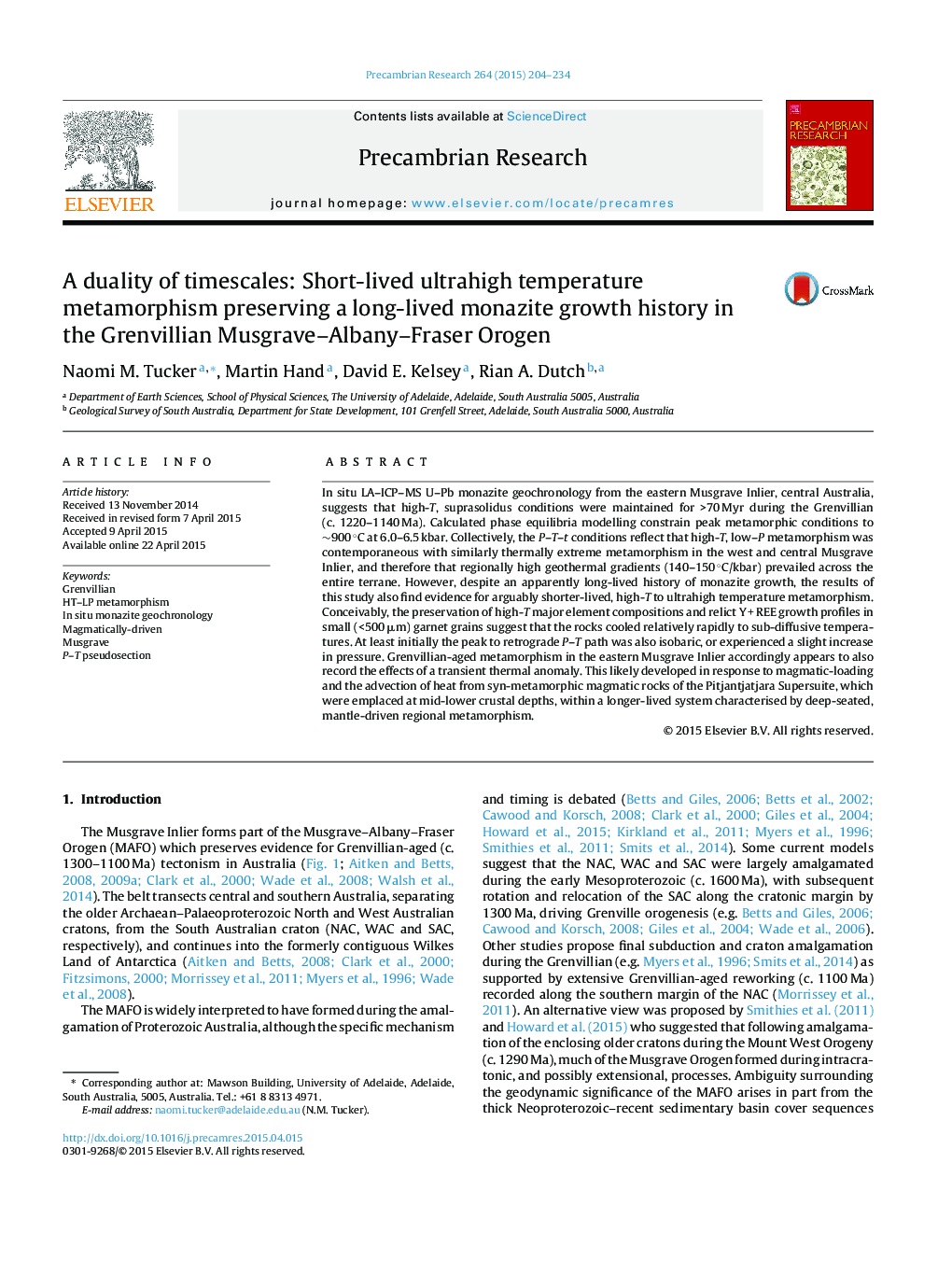| کد مقاله | کد نشریه | سال انتشار | مقاله انگلیسی | نسخه تمام متن |
|---|---|---|---|---|
| 4722684 | 1639611 | 2015 | 31 صفحه PDF | دانلود رایگان |

• High-T, suprasolidus conditions prevailed over prolonged timescales (>70 Myr).
• However, an excursion to UHT conditions was only transient.
• The rocks cooled relatively rapidly to sub-diffusive temperatures.
• The retrograde P–T path was isobaric, or experienced a slight increase in pressure.
• UHT conditions developed in response to magmatic loading by syn-metamorphic granite.
In situ LA–ICP–MS U–Pb monazite geochronology from the eastern Musgrave Inlier, central Australia, suggests that high-T, suprasolidus conditions were maintained for >70 Myr during the Grenvillian (c. 1220–1140 Ma). Calculated phase equilibria modelling constrain peak metamorphic conditions to ∼900 °C at 6.0–6.5 kbar. Collectively, the P–T–t conditions reflect that high-T, low–P metamorphism was contemporaneous with similarly thermally extreme metamorphism in the west and central Musgrave Inlier, and therefore that regionally high geothermal gradients (140–150 °C/kbar) prevailed across the entire terrane. However, despite an apparently long-lived history of monazite growth, the results of this study also find evidence for arguably shorter-lived, high-T to ultrahigh temperature metamorphism. Conceivably, the preservation of high-T major element compositions and relict Y + REE growth profiles in small (<500 μm) garnet grains suggest that the rocks cooled relatively rapidly to sub-diffusive temperatures. At least initially the peak to retrograde P–T path was also isobaric, or experienced a slight increase in pressure. Grenvillian-aged metamorphism in the eastern Musgrave Inlier accordingly appears to also record the effects of a transient thermal anomaly. This likely developed in response to magmatic-loading and the advection of heat from syn-metamorphic magmatic rocks of the Pitjantjatjara Supersuite, which were emplaced at mid-lower crustal depths, within a longer-lived system characterised by deep-seated, mantle-driven regional metamorphism.
Journal: Precambrian Research - Volume 264, July 2015, Pages 204–234